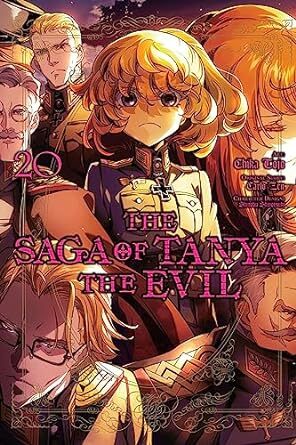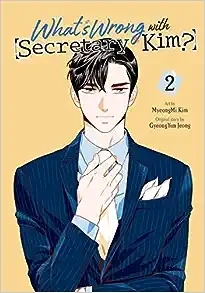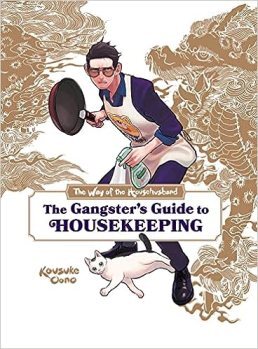S.Q. Eries's Blog, page 8
February 13, 2024
Manga Review: Sunbeams in the Sky Vol. #2
 There are stories about twin switcheroos and stories about shut-ins too traumatized to leave their homes. Yen Press’ Sunbeams in the Sky manages to combine both those elements. Read on for my review of Volume 2. (For other reviews of this series, click here.)
There are stories about twin switcheroos and stories about shut-ins too traumatized to leave their homes. Yen Press’ Sunbeams in the Sky manages to combine both those elements. Read on for my review of Volume 2. (For other reviews of this series, click here.)
Someone at the culture festival has figured out Himari and Mio’s switcheroo―but Mio’s only got Asaka on her mind! There’s a popular legend that if two people hold hands during the culture festival after-party, they’ll become a loving couple…so things might just work out if she plays her cards right on their date! Inspired by her friend’s resolve, Shizuku decides to confess her feelings to Tsukiyono―who seems to be hiding a secret of his own. As the sisters’ double lives get more and more tangled, can they continue to keep up the facade?
The ReviewVolume 1 ended with a boy recognizing Himari through her Mio disguise at the school festival. I thought he might be trouble – perhaps a classmate from Himari’s old school. As it turns out, he is the most harmless character possible. Aki Himekawa is a longtime friend of the twins. He knows about the attack on Himari and has been crushing on Mio for ten years. Apparently, he attends Mio’s school and was even in a basketball scene in Volume 1, but despite being an ideal person to help with Mio’s switcheroo scheme, he didn’t get an introduction till now. It almost feels as if the creator belatedly realized she needed another character privy to Himari’s trauma and tossed him in.
Anyway, he enters the story just in time for the culture festival after-party where (according to rumor) if you hold hands with the person you like and confess your feelings, you’ll become a couple. And what we wind up with is… a bunch of broken hearts. But in the midst of that disappointment, the twins and Shizuka are left wondering whether Asaka and Tsukiyono can actually tell the difference between Mio and Himari and the possible implications of that.
Whereas Volume 1 was more about Himari, Volume 2 is more about Mio. With Aki and Shizuka acting as confidants, we learn more about her guilt over the attack on her sister and what she hoped to accomplish by having Himari go to school in her place. Insecurity also arises as Mio wonders whether her classmates and teachers prefer the Himari version of her. Her ponderings are not nearly as tortured as Himari’s, but they’re certainly deeper than what we’ve seen so far of the more carefree twin.
The conclusion of this volume is more convoluted than it needs to be. Himari states that she wants to thank Asaka and Tsukiyono as herself, so it’s strange when she doesn’t simply do that. At any rate, the truth eventually comes out, and this twin switcheroo story appears to be heading toward love polygon territory next.
Extras include first page in color, artwork on the inside covers, and character profiles.
In SummaryVolume 1 was primarily about Himari, but for Volume 2, the focus shifts to Mio. We get her perspectives about her sister, her switcheroo plan, and her crush Asaka. On top of that, we get new character Aki, who’s been crushing on Mio the last ten years. The story started off about Himari’s trauma, but it’s becoming more about which character has feelings for whom.
First published at the Fandom Post.
February 6, 2024
Manga Review: Saga of Tanya the Evil Vol. #20
 The Saga of Tanya the Evil anime was a surprise favorite for me in 2017. With a title like that, I was almost too scared to give it a try, but conniving little Tanya turned out to be nothing like I anticipated. Yen Press has released Volume 20 of the manga adaption, and you can read on for the review. (For my reviews of other Tanya the Evil works, click here.)
The Saga of Tanya the Evil anime was a surprise favorite for me in 2017. With a title like that, I was almost too scared to give it a try, but conniving little Tanya turned out to be nothing like I anticipated. Yen Press has released Volume 20 of the manga adaption, and you can read on for the review. (For my reviews of other Tanya the Evil works, click here.)
François Republic. Mocking the Republican Army’s feeble attempts at resistance, Tanya assures herself that there’s no way the Empire could get Dunkirk’ed like its equivalent from her previous life—but when her knowledge of history clues her in to something no one else can see, she may have to take matters into her own hands…
The ReviewAfter the heartrending finale of Volume 19, readers get desperately needed lighter fare with the opening of Volume 20. The escaped remnants of the Republican Army have yet to spring their surprise move on the world, so the Empire’s basking in the glow of perceived victory. Among them are Tanya’s battalion subordinates. Tojo-sensei racks up the laughs with a drunken beach barbecue and even shenanigans on the part of dutiful Visha.
But then it’s back to business. Tanya can’t ignore the implications of the Republican Army’s escape. With the Empire dragging its heels on officially negotiating the end of the war, she heads to the capital for answers from her superiors.
Although there is no fighting action to be had, these Berun chapters are pretty interesting, and much of the content has no equivalent in the novel or anime. Tojo-sensei stretches out Tanya’s sojourn to give a glimpse of how victory has intoxicated both the general populace and military personnel. Moreover, we get a glimpse of Lergen’s home and a much more casual (and humorous) interaction between Tanya and the Colonel than usual. Tanya also visits the orphanage she came from, and Visha goes to the movies with her old pal Elya. Because our characters are usually in a military context, seeing them in civilian situations is kind of fun. Plus, they’re a bit more open in their interactions.
The end of Tanya’s visit culminates in a face-to-face conversation with General Zettour. Unlike her frantic attempt to stop the escaping Republicans, there’s no race against time. Yet this scene carries the same intensity and woefully misaligned internal thoughts as Tanya and Zettour rack their minds to read the intent of the other.
The volume ends with the Empire’s illusion of victory very clearly evaporating. Unlike the anime, where Tanya’s superiors gloss over possible errors on their part, the manga higher-ups clearly recognize their mistake in stopping Tanya. Which makes it that much more satisfying for readers because we get to see her actions justified. But that’s no comfort to poor Tanya as she gets sent out to the battlefield yet again.
Extras include a world map, battle log thus far, character introductions (in ridiculously small font), profile for the 203rd Battalion, country profiles, and footnotes (also in ridiculously small font).
In SummaryA brief taste of victory for the Empire! Tanya’s subordinates party on the beach, and civilians and military officers revel in the capital. It’s a fun change of pace to see our characters off the battlefield, and Lergen and Tanya in particular experience unexpected aspects of each other. So enjoy it now, because the Republican Army’s about to pop the Empire’s bubble soon!
First published at the Fandom Post.
January 30, 2024
Manga Review: Doomsday With My Dog Vol. 3
 There are tons of post-apocalyptic works in the market. But how about one where the last human on earth has conversations with her talking dog? That’s the premise of Doomsday With My Dog. Read on for the review of Volume 3 of the manga. (For other reviews of this series, click here.)
There are tons of post-apocalyptic works in the market. But how about one where the last human on earth has conversations with her talking dog? That’s the premise of Doomsday With My Dog. Read on for the review of Volume 3 of the manga. (For other reviews of this series, click here.)
What They Say
When a lone high school girl decided to hole up in her room with her trusty canine companion, she never could’ve dreamed they would become a pair of adventurers exploring everything post-apocalyptic Japan has to offer! Whether they’re enjoying a barbecue with Anubis or trying to survive a night in a haunted mansion, life after doomsday is one heck of a roller coaster―and this duo is strapped in for the ride!
Volume 3 of Doomsday With My Dog is very dog-focused. The aliens and tanuki make brief appearances, and we have the introduction of a red-haired angel and a philandering penguin. However, for the most part, these vignettes are all about dogs. Interestingly, the BL Collie doesn’t show up, but Husky is there once more to play the fool. Chapter 32 in particular introduces a bunch of dogs, all different breeds, and uses their varied personalities to turn a haunted mansion into a comedy. Of course, the breed whose quirks are the most studied/mocked is the Shiba Inu, with Haru and his two female admirers demonstrating the idiosyncrasies of the Shiba. The Anubis return, this time with the Bastet cat-people, and their joint barbecue turns into a humorous comparison between canine and feline types. There’s also a tribute to Laika, the dog sent into space by the Soviets in 1957. While the creator still uses a four-panel format, the amount of content presented in a slightly longer format seems to have increased.
Like Volumes 1 and 2, Volume 3 also has a bonus story at the end. But unlike the previous bonus stories, this one is less about Haru’s relationship with his master and more of a commentary about dogs and humans in general. While there are funny bits with Haru’s jealousy getting the better of him, the story is “heavy” by the creator’s own admission, so have the tissues ready when you read it.
Extras include translation notes and afterword.
In SummaryThis volume is less about the post-apocalyptic landscape and more of a sitcom about different dog breeds and personalities. If you like dogs, especially Shiba Inu, you’ll enjoy this exploration of their idiosyncrasies. But be warned… the bonus story is a real tear-jerker for dog lovers.
First published at the Fandom Post.
January 23, 2024
Manhwa Review: A Business Proposal Vol. 2
 Lots of Korean web comics and web fiction are successfully making the jump from the Internet to traditional media nowadays. One of these is A Business Proposal. Read on for the review of Volume 2 of the manhwa. (For other reviews of the series, click here.)
Lots of Korean web comics and web fiction are successfully making the jump from the Internet to traditional media nowadays. One of these is A Business Proposal. Read on for the review of Volume 2 of the manhwa. (For other reviews of the series, click here.)
On a romantic evening date with the young, rich, and unbelievably handsome Taemu, Hari is the envy of all women…but little do they know―it’s all fake! She has been trapped into playing the part of his girlfriend to appease his meddlesome grandfather, all the while desperately trying to hide the fact that she is actually an employee at his company! How long can she keep up this nerve-wracking double life?
The ReviewAfter being coerced into becoming Taemu’s fiancée for hire, Hari’s got a dilemma: how does she pull off this gig without her employer-who-hates-being-lied-to discovering she works for his company? Thus Hari switches her femme fatale persona for another fake identity. Meanwhile, Taemu’s not being completely truthful himself. He’s still actually set on marrying her and using the “fiancée job” as a means to convince her to agree.
Sounds like a pretty good strategy for Taemu to accomplish his goal, but unfortunately, he is his own worst enemy. In keeping with his strict, single-minded personality, he regularly calls Hari at 4 AM as if it is normal, demands that she meet up with him with little to no warning, and nitpicks if she is a single minute late. Hardly charming behavior, and Hari runs herself ragged switching between her office drone and sexy escort look and avoiding Taemu in their workplace.
While watching Hari freak out is funny, the vibe isn’t exactly romantic between our main couple. On Taemu’s end, he seems more weirdly obsessed then smitten, and considering all the lies that Hari has thrown (and continues to throw) at him, it’s hard to tell what he finds attractive asides from maybe her looks.
The one who is basking in a romantic glow is Hari’s friend Yeongsuh. She’s found her Mr. Right, and she’s not particularly remorseful about the suffering she’s brought upon (and continues to bring upon) Hari. Between Yeongsuh and Taemu, this title is really painting rich people as awful, self-centered jerks. However, things can’t go TOO well for anyone in a Korean drama, and Yeongsuh’s blind date proxy scheme comes back to bite her in a big and personal way, LOL.
In SummaryThe lies continue… Hari’s cover goes from femme fatale to part-time hired escort. And unfortunately for her, Taemu forces her to take a gig as a pretend fiancée. While some of the setup is implausible, it is entertaining to watch Hari frantically switching between personas. And then it’s REALLY satisfying when rich girl Yeongsuh, the cause of Hari’s troubles, gets bit by her own proxy blind date scheme.
First published at the Fandom Post.
January 16, 2024
Manhwa Review: Not-Sew-Wicked Stepmom Vol. #1
 The isekai genre has gotten big enough to spin off subgenres such as the reincarnated villainess. Not-Sew-Wicked Stepmom is an entertaining take on that subgenre that also happens to be a fairytale retelling. Read on for my review of Volume 1.
The isekai genre has gotten big enough to spin off subgenres such as the reincarnated villainess. Not-Sew-Wicked Stepmom is an entertaining take on that subgenre that also happens to be a fairytale retelling. Read on for my review of Volume 1.
Once upon a time, there was a lovely young princess who suffered under her cruel stepmother…that is, until a children’s clothing designer is reborn as the evil queen! All Her Majesty, Abigail Friedkin, wants to do is dote on the adorable Princess Blanche and give her the happy childhood she deserves. The problem is, the previous Abigail has garnered a reputation for being extremely jealous and materialistic-and to top it off, her smile is the stuff of children’s nightmares! Will Abigail be able to convince her stepdaughter that she might not be so wicked after all?
The ReviewWhen a 30-year-old children’s clothing designer dies from overwork, she finds herself in the body of Queen Abigail, stepmother to the adorable 11-year-old Princess Blanche. All the resurrected woman wants to do is dote on the princess and give her the happy childhood she deserves. Problem is, Princess Blanche – and the entire palace staff – are terrified of her!
Not-Sew-Wicked Stepmom has a convoluted title, but the work itself is actually a fun take on the isekai-ed villainess subgenre. After dying of overwork, a modern Korean woman is reincarnated as the stepmother in a Snow White scenario. Basically, the original Queen Abigail dies under mysterious circumstances, but she suddenly returns to life before they can bury her. It’s during this brief death that the Queen’s soul is swapped with that of our recently deceased protagonist, and she wakes up in her new world in Abigail’s coffin and – conveniently enough – with some of Abigail’s memories.
Those memories, however, don’t include the circumstances under which the Queen died, which has her wondering if someone’s out to get Abigail. Even more pressing is that our protagonist recognizes that she is now in the position of the evil stepmother of the Snow White fairytale, and if she doesn’t improve relations with her stepdaughter Blanche, she’s bound for a BAD END. To make things more difficult, although Abigail has a pretty face, the fact that she is this world’s villainess means that her smiles always have a grotesque quality and her laughter has a diabolical tenor no matter how hard she tries to come off as kind and harmless.
Thus, the story has pretty good stakes, and the contrast between Abigail’s actual expressions and how she tries to be perceived provides a hefty source of visual humor. I should mention that even though she’s longing to sew outfits for her stepdaughter, we haven’t seen her making anything for Blanche yet. For now, she’s obsessing over the girl and showering her with gifts in a manner that screams daughter-complex. Meanwhile, everyone in the palace is struggling to determine whether the Queen’s plotting something or if she’s had a real change of heart.
The supporting cast does their part wonderfully in portraying the confusion sown by the reincarnated soul. For Abigail’s attendants, we have the long-suffering head attendant Norma and the newbie Clara. Norma was thoroughly abused by the original Abigail while Clara has only ever known the Queen with her new soul. Their differing behaviors and reactions toward the Queen demonstrate just how awful the original Abigail treated others while simultaneously providing fodder for comedy. The magic mirror of this story is considered a defective magical item because of his smart mouth. He (and everyone else) fully expects the Queen to destroy him because of his frank personality, but she astonishes everyone by making him her chief confidant instead.
Princess Blanche as of yet does not have much personality to speak of; she’s merely there to be the object of the Queen’s obsessions. Abigail’s husband, however, is another story. The original fairytale didn’t have much to say about the king, but in this version, he’s actually the cause of the misery in his family. He neglects his daughter and wants nothing to do with his wife, whom he married purely for political reasons. His rejection of Abigail’s affections was why the stepmother Queen’s personality warped in the first place, and the reincarnated Queen feels nothing but contempt for him. However, this volume hints that the king himself is somehow a victim. As such, it looks like this couple’s relationship is in store for future twists and turns.
By the way, this book is printed in full color on glossy pages. The illustrations are fun, funny, creepy, and adorable as the scene demands it. It has a European fairytale palace setting, so be prepared for tons of flounces and frills.
Extras include an afterword from the illustrator.
In SummaryA modern-day woman gets reincarnated in the body of an evil Queen! All she wants to do is spoil her stepdaughter, but no matter what she does, everyone suspects she’s up to no good. Not-Sew-Wicked Stepmom is a funny, brilliant isekai and Snow White retelling. I especially appreciate the fact that the king is actually an active player in the story and not just an absentee father/husband. Looking forward to the next volume!
First published at the Fandom Post.
January 9, 2024
Novel Review: The Samurai and the Prisoner
 Samurai generally evoke epic tales of battlefields and duels. But how about a gripping mystery involving swordsmen from Japan’s Warring States Era? That’s what Honobu Yonezawa has created in The Samurai and the Prisoner.
Samurai generally evoke epic tales of battlefields and duels. But how about a gripping mystery involving swordsmen from Japan’s Warring States Era? That’s what Honobu Yonezawa has created in The Samurai and the Prisoner.
The winter of 1578, four years prior to the Honno–Ji Incident. Araki Murashige has betrayed his ally Oda Nobunaga and holed himself up in Arioka Castle—but a string of unsettling incidents within the castle walls has him at his wit’s end. The desperate warlord’s only hope for solving these mysteries is imprisoned in the castle’s dungeon: a man named Kuroda Kanbei, one of Oda’s most gifted strategists. When all the conflict and intrigue come to a close, what will these two men have gained…and lost? Award–winning author Honobu Yonezawa’s English–language debut is a page–turning blend of historical and detective fiction.
The ReviewWhen warlord Araki Murashige imprisons the gifted strategist Kuroda Kanbei, he has no intent of interacting with him again. However, a month later, a seemingly impossible killing takes place in Murashige’s castle. The resulting rumors threaten to undermine his authority, and desperate to find the culprit, Murashige takes the mystery to the cleverest person in his castle – the prisoner in his dungeon.
The Samurai and the Prisoner is a wonderfully written novel that is both a historical and a mystery. Set in the Warring States Era, it features contemporaries of the notable Oda Nobunaga, although Oda himself never appears in person. The book includes a reference list of historical texts, and the descriptions of settings, battles, cultural practices, and religious, military, and political powers reflect the author’s thorough attention to detail. As a mystery, the conundrums that beset Murashige are presented like a series of four detective cases that invite the reader to guess at the solution themselves. The stakes involved in each mystery are also high, adding to the tension of the story. However, the pace does get bogged down in parts because the explanations of the circumstances of each incident and their political, religious, and military ramifications can get long-winded.
But as well-researched and cleverly crafted as this novel is, it has a major handicap when it comes to Western audiences. The author assumes that the reader is familiar with Japanese history, specifically the Warring States Era. I was able to get by because I’d watched a few anime and J-dramas about Oda Nobunaga, but if you don’t know what he accomplished and what type of reputation he had, understanding the motivations and circumstances of the characters will be difficult. However, if you’re knowledgeable about that era (or are willing to look up references to learn about it), Yonezawa’s portrayal of Murashige, a lesser figure of that period, is fascinating.
The story is written in the third person, but the vast majority of the book follows Murashige and his thoughts. He wasn’t born into a position of authority, but because of his skills as a warrior and his intellect, Oda grants Murashige the governance of Settsu. However, Murashige turns traitor on Oda to align with the Mouri Clan, and the book opens with the messenger Kanbei attempting to persuade Murashige to return to Oda and getting tossed into Murashige’s dungeon as a result. At first, Murashige seems to have the upper hand against his former master, but a series of betrayals and military movements instigated by Oda leaves Murashige and his samurai commanders bereft of the protection of the Mouri Clan.
Thus, Murashige’s forces are besieged in the castle town of Araki and cut off from allied forces when the series of mysterious incidents occur. On top of being serious crimes to be solved, they are also threats to Murashige’s authority; with each new mystery that arises, he becomes more convinced a traitor’s scheming to bring his downfall. And at the end of the book, Yonezawa delivers not one but two satisfying twists.
A note regarding the translation. Japanese is a language with several levels of formality. For the most formal scenes, the translator uses terms like “ye,” “prithee,” and “hark.” The archaic words take some getting used to, but this is a story set in the 1500s so they are actually suited for the time.
In SummaryA detective-style novel set in a samurai castle town! Those unfamiliar with the Warring States Era will likely get tripped up by the numerous historical figures and events mentioned in the book as the author assumes readers have knowledge about that background. However, if you’re a Japanese history buff or willing to read up on the subject, The Samurai and the Prisoner is an engaging, if sometimes long-winded, mix of mystery and historical fiction.
First published at The Fandom Post.
January 2, 2024
Manhwa Review: What’s Wrong with Secretary Kim? Vol. 2
 Lots of Korean web comics and web fiction are successfully making the jump from the Internet to traditional media nowadays. One of these is What’s Wrong with Secretary Kim?. Read on for the review of Volume 2 of the manhwa. (For other reviews of this series, click here.)
Lots of Korean web comics and web fiction are successfully making the jump from the Internet to traditional media nowadays. One of these is What’s Wrong with Secretary Kim?. Read on for the review of Volume 2 of the manhwa. (For other reviews of this series, click here.)
Operation: Sweep Miso Off Her Feet is in full force! Winning over his secretary’s affection has proven to be a tough task, but Youngjun’s pulling out all the stops and re-creating her perfect date—whatever it takes for her to stay! Though Miso finds her heart fluttering at his advances, her dreams are haunted by the memories of a boy from her past, one she feels too compelled to remember…
The ReviewArmed with survey information and his vast resources, YoungJun pulls out all the stops in creating Miso’s perfect date! But YoungJun being his self-absorbed YoungJun self manages to sabotage the mood more than once. Like a good romantic comedy, our main couple is never quite able to get in step with each other, yet each does manage to see the other in a romantic light, if at different moments.
In the end, Operation: Sweep Miso Off Her Feet doesn’t do the job of convincing her to be his girlfriend. However, it still serves a purpose. Shortly thereafter, Miso goes on a blind date and later gets asked out by a handsome coworker. Though both men would make excellent boyfriend material, Miso can’t help but compare them to YoungJun. All part of YoungJun’s grand scheme… though it’s a rom-com so Miso’s comparisons don’t always portray YoungJun in a positive light.
Then the narrative shifts away from dating comedy to phobias and dark memories. Miso gets distracted from her search for Mr. Right when her friend’s journalist fiancé discovers a possible connection between the mysterious boy of her past and an incident hushed up by YoungJun’s family. At the same time, YoungJun’s older brother returns to Korea for the first time in three years. Unlike YoungJun, this Lee son resides in France, has nothing to do with the family business, and has a charming personality. Oh, and he and YoungJun hate each other’s guts. It’s an enmity that goes back to their childhood, and those elements combined with glimpses of our characters’ dreams create a compelling element of mystery in the story.
Extras include illustration gallery, next volume preview, artist’s note, and translation notes.
In SummaryWhat’s Wrong with Secretary Kim? continues the rom-com with YoungJun simultaneously creating and flubbing up Miso’s dream date. However, halfway through the volume, the tone shifts from humor to mystery as YoungJun’s older brother enters the story. Phobias, nightmares, and intensely bad blood between the brothers will soon have you pondering What’s Wrong with the Lee Brothers?
First published at the Fandom Post.
December 19, 2023
Manga Review: Akane-banashi Vol. 1
 Rakugo is a very Japan-specific storytelling art. As such, rakugo manga isn’t the sort of genre with a built in Western audience. However, Kodansha made the leap with Descending Stories a few years back, and Viz is releasing yet another rakugo tale, Akane-banashi. Read on for the review of Volume 1.
Rakugo is a very Japan-specific storytelling art. As such, rakugo manga isn’t the sort of genre with a built in Western audience. However, Kodansha made the leap with Descending Stories a few years back, and Viz is releasing yet another rakugo tale, Akane-banashi. Read on for the review of Volume 1.
Shinta Arakawa wants nothing more than to pass his shin’uchi exam—the test that would make him a top-rank headliner and master storyteller in the traditional Japanese art of rakugo. Akane Osaki, his daughter and biggest fan, spies on him while he practices and learns his routines for herself. When rakugo master Issho Arakawa expels everyone after the exam with no explanation, a fire is lit inside Akane. From that day forth, she has had one goal—to avenge her father and prove his art was worthy of the title of shin’uchi.
The ReviewAkane Osaki’s father spent 13 years striving to become a master rakugo storyteller. But he and his fellow aspirants have their dreams crushed when the head of the rakugo school expels them all without explanation. Akane, who is her father’s biggest fan, vows to avenge him— by becoming a rakugo artist herself. But even with innate talent and the help of her father’s former teacher, the path to becoming a master storyteller is a difficult one with no guarantees!
Akane-banashi is a Shonen Jump title, which is interesting on two accounts. For one, it has a female protagonist. Not that it’s unheard of – I’ve seen shojo titles with male main characters, too – but it’s atypical of shonen stories. Also, Akane’s the only teenager in the cast, and aside from her mom and a couple side characters, the rest of the characters are all male adults.
The other thing that makes it unusual as a Shonen Jump title is that it’s about a very traditional Japanese storytelling art. So no space aliens, ninjas, pirates, or fantasy harems. Just a lot of men telling stories set in bygone eras and practicing their craft.
There’s no good equivalent to rakugo in modern American culture, and the repertoire is made up of tales that are unknown to the vast majority of Westerners. As such, this isn’t the best series for newbie manga readers or action/adventure fans. The creators give the series a shonen competitive tone with an adversary, rivals, mentors, and a ranking system for the protagonist to climb. However, the entire story is steeped in Japanese culture and tradition, some of which is very specific to the rakugo art, so be prepared for a lot of lingo. The volume concludes with a two-page “Basics of Rakugo” written by the rakugo consultant for this series. While some of it is informative, I’m not sure how helpful the advice to watch a live performance will be for English speakers who have zero Japanese comprehension.
In terms of the actual plot, the story opens with a 55-page chapter introducing Akane’s rakugo obsessed father, her love for his storytelling, and the fateful exam that destroyed his dream of becoming a master storyteller. It then fast forwards six years into the future with Akane striving to achieve what her father could not. Her logic of proving her father’s brilliance by having the rakugo school acknowledge her talent is shaky. After all, rakugo is a solo performance art, and her father isn’t even training her. However, the story does a good job of establishing her love for the art, and her grudge against the rakugo master who canned her dad is relatable, so… whatever.
Getting back to the characters, aside from the fact that Akane’s female, she fits the profile for a Shonen Jump protagonist. She’s got a goal of becoming the best, she’s got innate talent and passion for what she’s doing, and her personality is bold and energetic. However, unlike most shonen titles, our main character has no peers her age or level.
The thing about rakugo is that, unlike music, baseball, or dance, it isn’t something many kids get the chance to learn or even try. It’s not a group activity, and it doesn’t exactly lend itself to being a club activity. As explained in the “Basics of Rakugo,” the art is taught one on one from seniors to juniors. Thus, 16-year-old Akane has a college age rival, and the other pupils mentored by her instructor are also college age or older. So everyone has more experience than her. As a result, the story thus far is her learning a different aspect of the rakugo craft from everyone she meets–even the izakaya waitstaff. However, the creators try to make up for their older cast by giving them eccentric personalities. Thus, we have the introvert, the vain one, the strict enforcer, and the overly familiar guy.
From an illustration standpoint, the manga is very strong. All the characters are distinct, and the artist skillfully manipulates expressions/shading/backdrops when they go into story telling mode. The various settings are wonderfully detailed. When the narrative shifts to a rakugo plot, he switches to a traditional art style to reflect it.
Extras include mini-comics and sketches in between chapters, the two-page “Basics of Rakugo,” and a couple bonus illustrations.
In SummaryAkane-banashi has a spunky teenage protagonist, excellent illustrations, and a very clear story arc. However, the subject matter is the traditional storytelling art of rakugo, which is not well-known outside Japan. While it makes the manga unique, it also poses a stumbling block for a young Western audience. However, if you’re open to learning (a lot) about Japanese traditional culture, Akane-banashi might be a fun way to do it.
First published at The Fandom Post.
December 5, 2023
Manhwa Review: My Gently Raised Beast Vol. 3
 Lots of Korean web comics and web fiction are successfully making the jump from the Internet to traditional media nowadays. One of these is My Gently Raised Beast. Read on for the review of Volume 3 of the manhwa. (For reviews of other volumes, click here.)
Lots of Korean web comics and web fiction are successfully making the jump from the Internet to traditional media nowadays. One of these is My Gently Raised Beast. Read on for the review of Volume 3 of the manhwa. (For reviews of other volumes, click here.)
All it took was a brush with death to get her there, but Blondina finally realizes her true feelings toward Amon. It’s more than just friendship―it’s love! And so begins her quest to win over the handsome divine beast. But first things first―she’s curious to see how he looks in human form, all grown up. Luckily, Amon’s been waiting for her to ask: “…Think you can handle it?”
The ReviewAmon’s now the leader of the Divine Beasts. Therefore, he has the authority to pursue the romantic relationship he’s desired with Blondina. As for Blondina, she’s finally stopped seeing Amon as a cute kitten and fallen hard for his grown human form. Sounds perfect, right? They’re both into each other, and nothing’s stopping them from getting together…except their own misunderstandings.
I’m not averse to romances where couples misread one another, but the way things play out between Amon and Blondina is more frustrating than titillating. Blondina especially seems stone-blind to what’s happening. Amon’s never made advances on Lucy, yet Blondina is stuck on the idea he’s in love with Lucy despite the fact that Amon’s paws and tongue are all over her. When he switches to human form and gets handsy with her, she attributes it to his “innocence,” and when he kisses her, she chalks it up to “mating season.” Blondina did not lead a sheltered existence. Far from it, she’s well aware that humans and Divine Beasts have sexual urges. So her behavior doesn’t make much sense, and it winds up dragging the plot.
While the developments between Amon and Blondina make me want to slap them both, the developments with Blondina’s half-siblings are much more engaging. Lart, who is now pretty much Blondina’s friend thanks to his crush on Lucy, takes steps toward actually courting the object of his affections. Adellai, on the other hand, remains as cold toward Blondina as ever and still harbors ambitions of stealing the crown from her brother. Now she gets an ally. Philip, the nobleman’s son who took an interest in Blondina before leaving to study abroad, returns. But after Amon interferes with Philip’s plans to woo Blondina, Philip teams up with Adellai in her search for the golden-haired, golden-eyed individual who can subdue Divine Beasts.
In SummaryWith the ghosts of Blondina’s past dealt with and the leadership of the Divine Beasts in Amon’s paws, it’s back to the palace, where Amon starts making romantic advances toward Blondina. Unfortunately, she’s ridiculously slow to understand his intentions, so these potentially heart-throbbing moments left me annoyed instead. Thankfully, in the palace faction department, things get interesting with Lart stepping up his game in order to court Lucy while Adellai gains a valuable ally in her search for the person who can subdue Divine Beasts. All we need now is for Blondina and Amon to get on the same page with their relationship, and this story can really get going.
First published at the Fandom Post.
November 21, 2023
Manga Review: The Way of the Househusband: The Gangster’s Guide to Housekeeping
 As a manga trope, yakuza tend to be terrifying thugs or comical characters. Tatsu of The Way of the Husband definitely falls in the funny category. To go with the manga series, Viz is presenting The Gangster’s Guide to Housekeeping, a housekeeping handbook inspired by Tatsu! Read on for my review. (For other reviews of this series, click here.)
As a manga trope, yakuza tend to be terrifying thugs or comical characters. Tatsu of The Way of the Husband definitely falls in the funny category. To go with the manga series, Viz is presenting The Gangster’s Guide to Housekeeping, a housekeeping handbook inspired by Tatsu! Read on for my review. (For other reviews of this series, click here.)
Everyone, from busy office workers and aspiring homemakers to the fiercest members of the yakuza, can gain important life skills from The Way of the Househusband: The Gangster’s Guide to Housekeeping!
Learn the housekeeping secrets of the legendary gangster, Tatsu, with this practical and humorous book inspired by the popular manga series The Way of the Househusband. This detailed guide includes cleaning tricks to leave your home sparkling, secrets for finding cutthroat deals, schemes for mastering your territory, keys to caring for your gang, and much more. Within these pages, you will also find 25 delicious recipes that will satisfy any voracious gangster.
Follow these tips and apply the determination of the Immortal Dragon to cooking, cleaning, shopping, and crafting to discover the path to housekeeping success!
The ReviewThe Gangster’s Guide to Housekeeping is part domesticated gangster comedy, part practical guide. What it is NOT is a translation of a Japanese work. Oono’s name is on the cover, and nearly every page features illustrations from The Way of the Househusband manga. However, the book’s text was written by New York-based writer Laurie Ulster, and recipes are credited to Victoria Rosenthal.
In short, this is a housekeeping handbook inspired by Oono’s manga and written in the gangster style used for yakuza dialogue in Viz’s translation of The Way of the Househusband, but all the content is geared for an American audience. Which makes sense from a practical standpoint. For instance, the book recommends minimizing water by running full loads on dishwashers, which are fairly common in American households but rare in Japanese ones.
Still, even if you’re not interested at all in recipes or housekeeping tips, hard-core fans may consider the book as a collectors’ item. The hardcover book is beautifully produced, and the inside covers are decorated with illustrations of Tatsu’s dragon tattoo. Each subsection includes the specific manga scenes that inspired them. The pages of The Gangster’s Guide to Housekeeping are larger than the Househusband manga, so it provides larger reproductions of manga artwork, and a few are printed in full color. I should mention though that the manga frames retain their right to left alignment, while the rest of the book is formatted left to right, which tripped me up a couple times. In addition to Oono’s artwork, the book is also decorated with color chibi drawings of The Way of the Househusband characters drawn by Stephanie Kao.
The book is divided into four sections. Each section has its own layout color, which makes it easy to tell which part of the book you’re in.
“The Way of the Housekeeper” (teal layout), as you might guess, contains housekeeping tips and tricks. These include recipes for homemade cleaners (think lemons, vinegar, and baking soda), advice on room organizing, and managing home finances. Most of the content is good, basic advice, but some points had me a little leery. Like the suggestion to scuff up shoe soles with sandpaper to get enough traction to shovel snow. Certainly the jug in the toilet tank trick won’t work with the low flow toilets that abound in California.
“The Way of the Chef” (orange layout) is the longest section (78 pages). It starts off with practical information about knives and adapting recipes to different diets. That’s followed by recipes in the following categories: Appetizers, Soups and Stews, Mains, Desserts, and Drinks. Every item was featured in some way in the manga.
Each recipe begins with an introduction written in gangster lingo, but the actual recipe part is written in normal cookbook language with steps and lists (which makes it easier if you’re actually trying to cook the item). Recipes include difficulty level and note if they’re vegan, vegetarian, or dairy free. Because the manga featured mainly Japanese dishes, recipes also provide notes about Asian ingredients and suggest substitutions for items that might be difficult to find in the United States. I did find it strange that the recipe for “Simple Lemonade” calls for “citric acid” instead of lemon juice. Also, recipes include drawings of the item from the manga but no cooking diagrams. For most recipes, that’s not an issue, but envisioning the directions for “Bear Cookies,” “Tamagoyaki,” and “Birthday Cake” might pose a challenge.
“The Way of the Urban Explorer” (green layout) is the third and shortest section. It’s a bit of a hodgepodge as it starts with how to be a smart shopper, then moves to exercising and befriending neighbors, and ends with self-defense (against zombies). Basically, it feels like they picked the funniest images of Tatsu outside the house and wrote advice articles to go with them.
“The Way of the Gang” (pink layout) is even more of a hodgepodge. This section’s supposed to cover how to look out for your family, friends, and neighbors, and it does provide advice about throwing birthday parties, babysitting, and taking care of pets. However, it also includes a subsection on camping and DIY projects (making an apron, Halloween costumes, upcycling lumber). Like with “The Way of the Urban Explorer,” it feels like Viz selected a bunch of funny scenes from the manga and wrote content to go with it. There is some useful advice in this section, but it feels like they were going more for entertainment than instruction. Also, approach the DIY projects with caution. The suggestions for Halloween costumes are easy and clever, but making Tatsu’s apron is not as simple as the instructions make it sound. Plus there’s no pattern provided. If you’re a rank beginner at sewing, you’re better off buying a premade apron.
In SummaryWant to clean house like the Immortal Dragon? Hankering to re-create the foods featured in The Way of the Househusband? Then check out this housekeeping guide inspired by Oono’s manga! It’s meant more for entertainment than instruction with its illustrations and jokes. However, there is some good advice mixed up with the gangster humor, and the recipe section seems solid.
First published at The Fandom Post.



